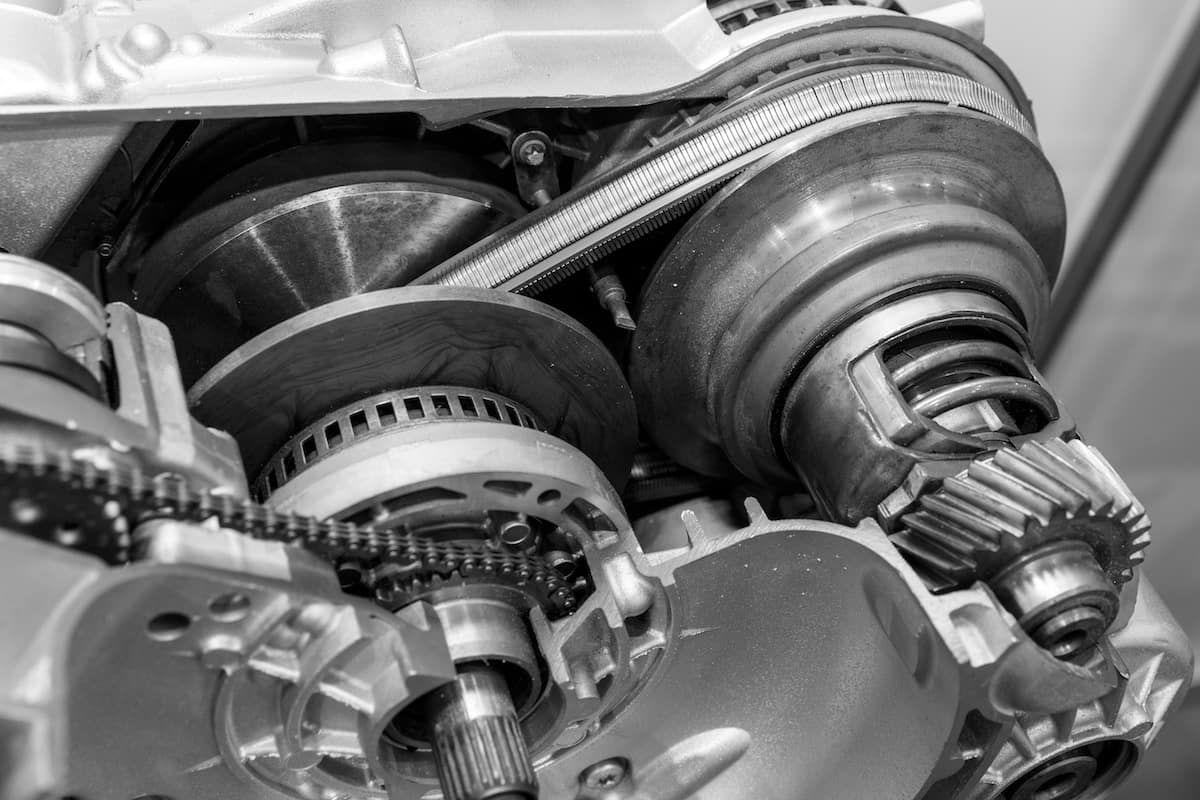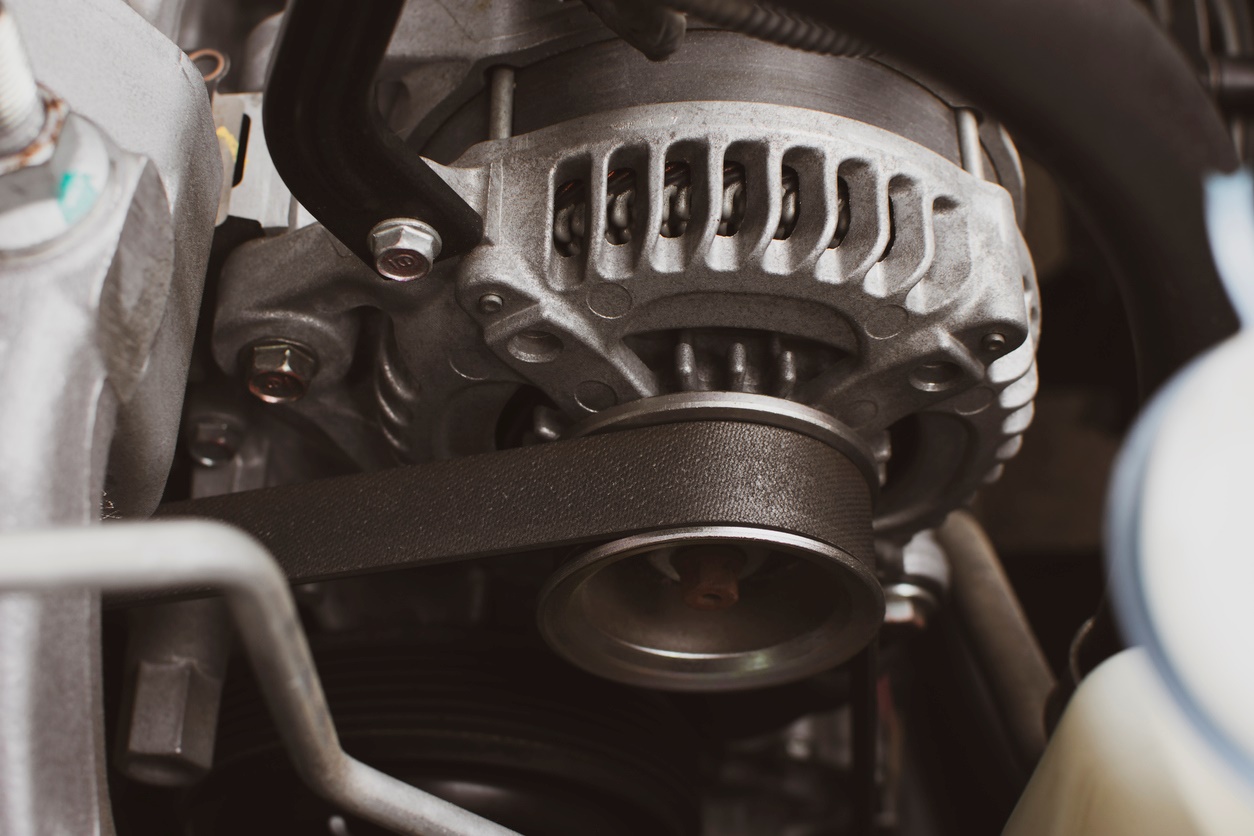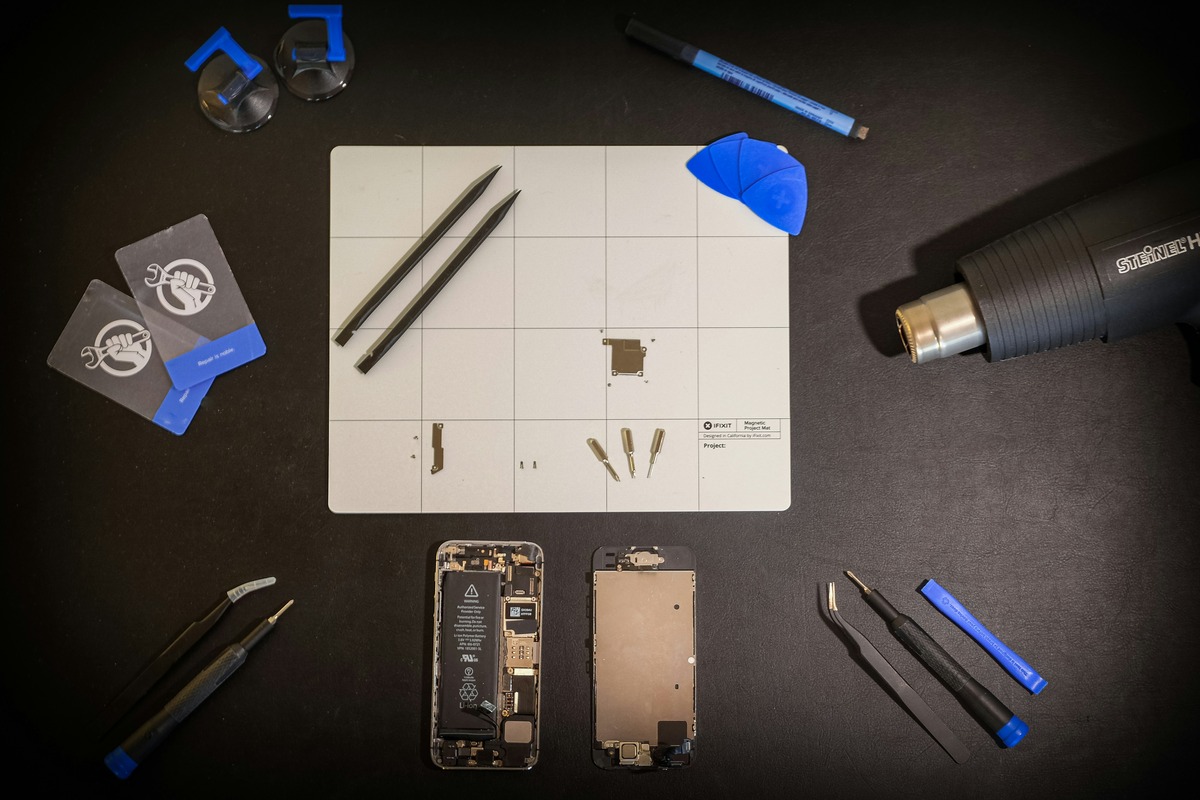Home>Automotive>The Shocking Cost Of Replacing A Nissan CVT Transmission Revealed!


Automotive
The Shocking Cost Of Replacing A Nissan CVT Transmission Revealed!
Published: February 7, 2024
Discover the true cost of replacing a Nissan CVT transmission and how it impacts your automotive expenses. Learn about the shocking revelations now!
(Many of the links in this article redirect to a specific reviewed product. Your purchase of these products through affiliate links helps to generate commission for Noodls.com, at no extra cost. Learn more)
Table of Contents
Introduction
The continuously variable transmission (CVT) has become increasingly popular in modern vehicles due to its smooth driving experience and fuel efficiency. However, Nissan's CVT transmissions have garnered attention for both their innovative design and potential maintenance issues. As a Nissan vehicle owner, it's crucial to understand the intricacies of the CVT transmission, including signs of potential problems and the associated costs of replacement.
In this comprehensive guide, we will delve into the world of Nissan CVT transmissions, shedding light on the telltale signs of transmission issues and the shocking costs involved in replacing a faulty unit. Furthermore, we will explore the various factors that can impact the overall expense of replacing a Nissan CVT transmission, providing valuable insights to help you make informed decisions about your vehicle's maintenance and care.
Buckle up as we embark on a journey to uncover the mysteries and realities of Nissan CVT transmissions, empowering you with the knowledge to navigate potential challenges and ensure the longevity of your vehicle's transmission system.
Understanding CVT Transmissions
A continuously variable transmission (CVT) is a type of automatic transmission that offers seamless gear shifting without distinct steps between high and low speeds. Unlike traditional automatic transmissions with a fixed number of gears, CVTs can variably adjust the gear ratio to provide optimal power delivery and fuel efficiency.
At the heart of a CVT lies a complex system of pulleys and belts or chains, which work in tandem to continuously modify the gear ratio based on driving conditions. This innovative design allows the engine to operate at its most efficient RPM range, enhancing fuel economy and delivering a smooth driving experience.
One of the key components of a CVT is the primary and secondary pulleys connected by a metal or composite belt. As the vehicle accelerates or decelerates, the pulleys adjust their diameters, effectively altering the gear ratio to match the driving requirements. This dynamic adjustment ensures that the engine operates within its ideal power band, optimizing performance and efficiency.
Nissan has been at the forefront of CVT technology, integrating these transmissions into a wide range of vehicles to improve overall driving dynamics and fuel economy. By harnessing the potential of CVT technology, Nissan has aimed to provide drivers with a more responsive and efficient driving experience, catering to the demands of modern automotive enthusiasts.
Understanding the fundamental principles of CVT transmissions is essential for Nissan vehicle owners, as it enables them to appreciate the innovative engineering behind their vehicles' powertrains. With this knowledge, drivers can better comprehend the intricacies of their vehicles' transmission systems and recognize the signs of potential issues, empowering them to take proactive measures to maintain their Nissan CVT transmissions.
In the next section, we will delve into the telltale signs that indicate potential problems with Nissan CVT transmissions, equipping you with the insights needed to identify and address transmission issues in a timely manner.
Signs of CVT Transmission Problems
Detecting potential issues with your Nissan CVT transmission is crucial for maintaining the longevity and performance of your vehicle. By recognizing the early warning signs of transmission problems, you can address issues promptly, preventing further damage and costly repairs down the road.
-
Unusual Noise: If you notice abnormal whining, humming, or clunking sounds emanating from the transmission, it could indicate internal components experiencing excessive wear or potential belt or pulley issues within the CVT system.
-
Delayed Response: A delay in acceleration when pressing the gas pedal can signify a lack of power transfer within the transmission, potentially pointing to belt slippage or other internal malfunctions.
-
Overheating: An overheating transmission can manifest as a burning odor or visible smoke emanating from the engine bay. This could be attributed to insufficient transmission fluid, a failing cooling system, or internal mechanical problems.
-
Shuddering or Vibrations: If you experience noticeable shuddering or vibrations during acceleration, it may indicate belt or pulley irregularities, or internal components struggling to maintain the proper gear ratios.
-
Fluid Leaks: Transmission fluid leaks, often identified by red or brown puddles beneath the vehicle, can signal deteriorating seals, gaskets, or other components within the CVT system.
-
Dashboard Warning Lights: The illumination of the "Check Engine" light or specific transmission-related warning indicators should prompt immediate attention, as they can signal various issues within the transmission system.
-
Loss of Power: A noticeable decrease in power or difficulty maintaining consistent speed, especially at higher RPMs, could indicate underlying CVT transmission problems affecting power delivery.
-
Unresponsive Gear Changes: If the transmission fails to smoothly transition between gears or exhibits erratic shifting behavior, it may indicate internal issues requiring inspection and potential repairs.
By remaining vigilant and attuned to these potential warning signs, Nissan vehicle owners can proactively address transmission issues, safeguarding the reliability and performance of their vehicles. In the following section, we will delve into the shockingly high costs associated with replacing a malfunctioning Nissan CVT transmission, shedding light on the financial implications of such a critical repair.
The Cost of Replacing a Nissan CVT Transmission
The prospect of replacing a Nissan CVT transmission can evoke apprehension due to the potential financial burden it entails. The shockingly high costs associated with this critical repair underscore the significance of understanding the financial implications and preparing for such an eventuality.
The cost of replacing a Nissan CVT transmission can range from $3,500 to $8,000, including parts and labor. This substantial expense is primarily attributed to the intricate and specialized nature of CVT transmissions, which demand meticulous attention and expertise during the replacement process. Additionally, the need for genuine OEM (Original Equipment Manufacturer) or high-quality aftermarket CVT components further contributes to the overall cost, ensuring the reliability and longevity of the replacement transmission.
The labor costs for replacing a Nissan CVT transmission are notably higher than those for traditional automatic transmissions due to the complexity of the CVT system. Skilled technicians with expertise in CVT diagnostics and replacement are essential for ensuring the proper installation and calibration of the new transmission, adding to the overall expense.
Furthermore, the cost of transmission fluid, necessary gaskets, seals, and other ancillary components must be factored into the total expenditure. These additional expenses aim to guarantee the seamless integration and optimal performance of the new CVT transmission within the vehicle's powertrain.
It is important to note that the actual cost of replacing a Nissan CVT transmission can vary based on several factors, including the specific model of the vehicle, the availability of replacement parts, the labor rates at the chosen repair facility, and any additional repairs or adjustments required during the installation process. As such, obtaining detailed quotes from reputable automotive service providers and discussing the scope of work can provide a clearer understanding of the anticipated costs.
The shockingly high cost of replacing a Nissan CVT transmission underscores the critical importance of proactive maintenance and care for the vehicle's transmission system. By adhering to the manufacturer's recommended service intervals and promptly addressing any signs of transmission issues, Nissan vehicle owners can mitigate the risk of premature transmission failure and the associated financial burden.
In the subsequent section, we will explore the various factors that can influence the overall expense of replacing a Nissan CVT transmission, shedding light on the nuanced elements that contribute to the shockingly high costs of this critical repair.
Factors Affecting the Replacement Cost
The total expense of replacing a Nissan CVT transmission is influenced by a myriad of factors, each playing a significant role in determining the overall cost of this critical repair. Understanding these factors is essential for Nissan vehicle owners, as it provides insights into the nuanced elements that contribute to the shockingly high costs associated with replacing a malfunctioning CVT transmission.
Vehicle Model and Year
The specific model and year of the Nissan vehicle can significantly impact the replacement cost of the CVT transmission. Newer models may incorporate advanced CVT technology and proprietary components, potentially elevating the overall expense of sourcing compatible replacement parts. Additionally, the availability of aftermarket components for older vehicle models can influence the cost, as genuine OEM parts are often preferred for ensuring optimal performance and longevity.
Labor Rates and Expertise
The labor rates charged by automotive service providers for CVT transmission replacement can vary based on geographical location, the reputation of the repair facility, and the expertise of the technicians. Skilled professionals with specialized knowledge in CVT diagnostics and replacement may command higher labor rates, reflecting the meticulous attention and expertise required for this complex procedure. Moreover, the time-intensive nature of CVT replacement contributes to the overall labor costs, as technicians must ensure precise installation and calibration of the new transmission.
Replacement Parts and Quality
The quality and sourcing of replacement parts play a pivotal role in determining the overall cost of CVT transmission replacement. Genuine OEM components, while ensuring compatibility and reliability, often come with a premium price tag. Alternatively, high-quality aftermarket parts may offer a cost-effective solution, albeit with careful consideration of their compatibility and performance. The need for specialized CVT components, including pulleys, belts, and electronic control units, further influences the total expenditure, emphasizing the intricate and specialized nature of CVT transmissions.
Additional Repairs and Adjustments
During the CVT transmission replacement process, additional repairs or adjustments may be necessary to ensure the seamless integration and optimal performance of the new unit. This can encompass the replacement of ancillary components such as gaskets, seals, and transmission fluid, all of which contribute to the overall cost. Furthermore, addressing any underlying issues within the transmission housing or cooling system can impact the total expenditure, highlighting the importance of a comprehensive assessment and potential ancillary repairs during the replacement procedure.
Warranty and Service Agreements
The inclusion of warranties or service agreements for the replacement CVT transmission can influence the overall cost, providing peace of mind and potential cost savings in the event of future transmission-related issues. Opting for extended warranties or service contracts may entail higher initial costs but can offer long-term financial protection and assurance, mitigating the risk of unforeseen expenses related to the replacement transmission.
By considering these multifaceted factors, Nissan vehicle owners can gain a comprehensive understanding of the nuanced elements that contribute to the shockingly high costs of replacing a CVT transmission. This insight empowers individuals to make informed decisions regarding their vehicle's maintenance and care, fostering a proactive approach to safeguarding the reliability and performance of their Nissan vehicles.
Tips for Maintaining Your Nissan CVT Transmission
Maintaining your Nissan CVT transmission is paramount to ensuring its longevity and optimal performance. By adhering to proactive maintenance practices, you can mitigate the risk of potential transmission issues and minimize the likelihood of incurring the shockingly high costs associated with CVT replacement. Here are essential tips to preserve the health of your Nissan CVT transmission:
-
Regular Fluid Inspections and Changes: Monitoring the condition and level of transmission fluid is crucial for preserving the integrity of the CVT system. Regularly inspecting the fluid for discoloration, contamination, or low levels can help identify potential issues early on. Additionally, adhering to the manufacturer's recommended fluid change intervals is essential for maintaining proper lubrication and cooling within the transmission.
-
Gentle Driving Habits: Practicing smooth and gradual acceleration, as well as avoiding sudden braking, can reduce the strain on the CVT system. By driving with a light foot and minimizing abrupt throttle inputs, you can alleviate the stress on the transmission components, promoting longevity and reliability.
-
Cooling System Maintenance: Ensuring the proper function of the vehicle's cooling system, including the transmission cooler, is vital for preventing overheating and thermal degradation of the CVT. Regularly inspecting the cooling system for leaks, blockages, or inefficiencies can help safeguard the transmission from excessive heat-related damage.
-
Timely Diagnostic Checks: Periodic diagnostic scans and inspections by qualified technicians can help identify potential issues within the CVT system before they escalate. Addressing any emerging concerns promptly can prevent further damage and mitigate the risk of extensive repairs or replacement.
-
Adherence to Service Intervals: Strictly adhering to the manufacturer's recommended service intervals for the transmission, including fluid changes, filter replacements, and system inspections, is essential for sustaining the health and performance of the CVT. By staying proactive with scheduled maintenance, you can uphold the reliability and efficiency of your Nissan's transmission.
-
Avoiding Excessive Loads and Towing: Minimizing the exposure of the CVT transmission to heavy loads and towing can alleviate undue stress on the system. Adhering to the vehicle's load and towing capacity guidelines can prevent premature wear and strain on the transmission components.
By incorporating these maintenance tips into your vehicle care regimen, you can actively contribute to the longevity and resilience of your Nissan CVT transmission. Proactive maintenance not only safeguards your vehicle's transmission system but also helps minimize the risk of unexpected and exorbitant repair costs associated with CVT issues. Embracing a proactive approach to transmission maintenance empowers Nissan vehicle owners to preserve the reliability and performance of their vehicles, ensuring a smooth and enjoyable driving experience for years to come.
Conclusion
In conclusion, the complexities and potential costs associated with replacing a malfunctioning Nissan CVT transmission underscore the critical importance of proactive maintenance and attentive care for the vehicle's transmission system. Understanding the innovative design and functionality of CVT transmissions empowers Nissan vehicle owners to recognize the early warning signs of potential issues, enabling them to take prompt action and mitigate the risk of extensive damage.
The shockingly high cost of replacing a Nissan CVT transmission, ranging from $3,500 to $8,000, reflects the intricate nature of these transmissions and the specialized expertise required for their replacement. Factors such as vehicle model and year, labor rates, replacement parts, additional repairs, and warranty considerations all contribute to the nuanced elements that influence the overall expense of this critical repair.
By embracing proactive maintenance practices, such as regular fluid inspections and changes, gentle driving habits, cooling system maintenance, timely diagnostic checks, adherence to service intervals, and mindful load management, Nissan vehicle owners can actively contribute to the longevity and resilience of their CVT transmissions. These essential maintenance tips not only preserve the health of the transmission system but also minimize the likelihood of incurring the shockingly high costs associated with CVT replacement.
Ultimately, by equipping themselves with comprehensive knowledge of CVT transmissions and embracing a proactive approach to maintenance, Nissan vehicle owners can safeguard the reliability and performance of their vehicles. This proactive stance not only fosters peace of mind but also ensures a smooth and enjoyable driving experience for years to come. It is through this proactive mindset and attentive care that Nissan vehicle owners can navigate the complexities of CVT transmissions and uphold the longevity and resilience of their vehicles' vital powertrain components.













